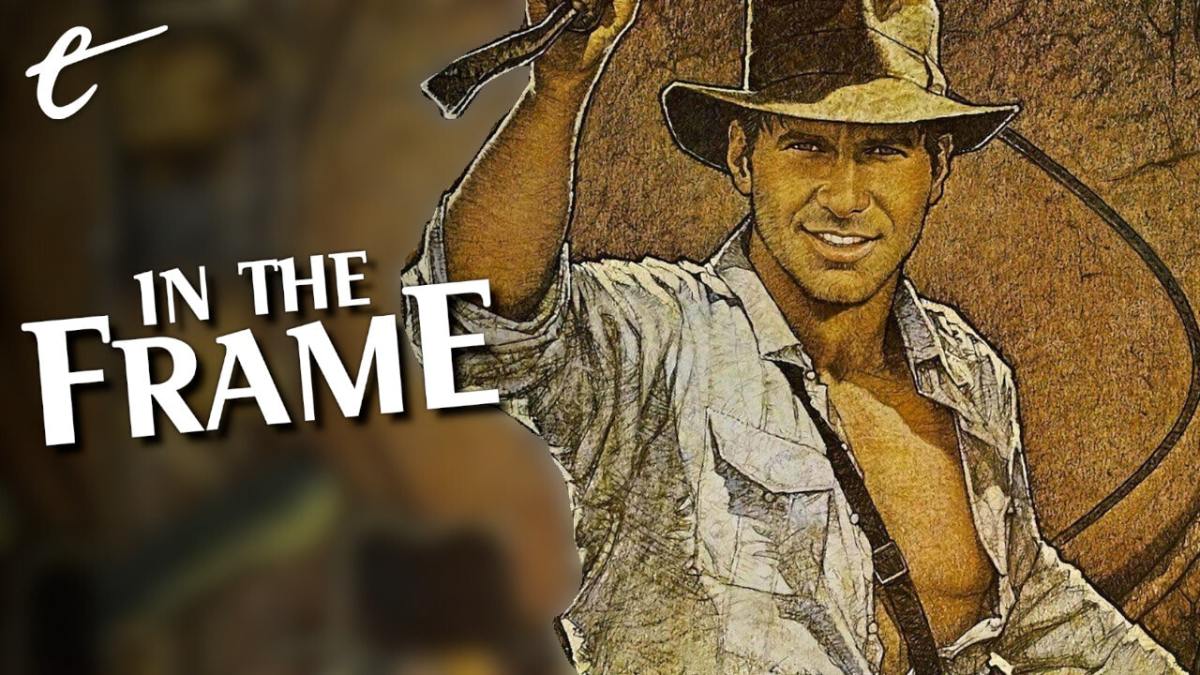Raiders of the Lost Ark is 40 years old this June.
It is a masterpiece. It was the highest-grossing movie of the year at the domestic box office. It was nominated for Best Picture and won more Oscars than any other movie that year. New York Times critic Vincent Canby described it as “an instant classic.” That appeal has not diminished with age. It was added to the National Film Registry in 1999. Just last summer, readers of The Los Angeles Times named Raiders of the Lost Ark “the ultimate summer movie.”
Raiders of the Lost Ark pairs populist appeal with virtuoso filmmaking. Like Mad Max: Fury Road, this is a film that demonstrates the potential of film as a medium without ever seeming pretentious. Director Martin Scorsese would famously and controversially describe modern blockbusters as “theme parks.” Raiders of the Lost Ark was explicitly built as a theme park ride movie, with Spielberg telling his collaborators, “What we’re just doing here, really, is designing a ride at Disneyland.”
However, Raiders of the Lost Ark is proof that it’s possible for a theme park movie to be real art. The film is perfectly structured as a visceral piece of cinema. It is not only a fine illustration of form, but an illustration that form does not necessarily follow function — sometimes the two work in harmony. Roger Ebert argued that “it is not what a film is about, it’s how it is about it,” and in the best films the two are inseparable from one another.
To understand Raiders of the Lost Ark, it is perhaps important to situate the movie in the career of Steven Spielberg. Spielberg had emerged as a sensation in the 1970s, as part of the New Hollywood era along with other so-called “Movie Brats.” The twin successes of Jaws and Close Encounters of the Third Kind had established Spielberg as a critical and commercial darling and earned him the creative clout to direct the black comedy 1941 from a script by Robert Zemeckis and Bob Gale.

Released in December 1979, 1941 was not a good fit for Spielberg. A screwball comedy set in the immediate aftermath of Pearl Harbor, 1941 was closer in tone to the more irreverent explorations of American history and mythmaking found in Zemeckis’ later work like Back to the Future and even perhaps Forrest Gump. Gale would concede that Spielberg was “a little bit out of his element” on the film, and audiences and critics agreed. While the film wasn’t a flop, it did not perform well.
1941 was likely just part of the larger picture. Several of Spielberg’s contemporaries had endured recent humiliating failures that had derailed their careers, like Martin Scorsese’s flop New York, New York or William Friedkin’s fiasco Sorcerer. By late 1979, the press was already reporting on the “chaotic” production of Michael Cimino’s Heaven’s Gate, which would flop so hard on its release in November 1980 that it effectively killed the New Hollywood movement.
Critic Richard Brody has described 1941 as a Spielberg movie “in which he cut loose” and argued that its failure “inhibited him maybe definitively.” Scorsese responded to the failure of New York, New York by pouring everything into the “kamikaze film making” of Raging Bull. Friedkin read the failure of Sorcerer as a consequence of the way that Star Wars had “automatically opened the floodgates” to a new wave of blockbuster cinema. In contrast, Spielberg went back to basics.
Critic Pauline Kael has described Raiders of the Lost Ark as “a workout,” and that feels apt. George Lucas had originally proposed the idea to Spielberg while the two were holidaying in Hawaii in 1977, discussing how Lucas would follow the success of Star Wars. Spielberg has referred to himself as a “director for hire” under Lucas on the films, and he was only paid $1.5M to Lucas’ $4M. Raiders of the Lost Ark seemed designed as proof Spielberg could make a hit quickly, cheaply, and efficiently.

“It was actually the shortest schedule of completion that I’ve been involved with since The Sugarland Express,” Spielberg recalled. “Sugarland took 55 days. Raiders, for all of its spectacle and expansiveness, we shot in 73 days.” He elaborated, “It was spontaneous combustion, a relay race. We didn’t do 30 or 40 takes — usually only four. It was like silent film — shoot only what you need, no waste. Had I had more time and money, it would have turned out a pretentious movie.”
Raiders of the Lost Ark is structured like a roller coaster. Like Star Wars, it was inspired by the serials that Lucas had loved as a child. Like The Empire Strikes Back, it plays as a distillation of the form, a set of rollicking action sequences tied together by strong character work and charismatic performances. Lucas and Spielberg even drafted in Empire Strikes Back writer Lawrence Kasdan to write the connective tissue that transitions the movie from one memorable action beat to another.
Despite Spielberg’s ruthlessly efficiency, there’s an impressive artfulness to how Raiders of the Lost Ark is constructed. A lot of this is down to cinematographer Douglas Slocombe, who makes excellent use of light and shadow to facilitate Spielberg’s visual storytelling. After all, light is important to the plot of Raiders of the Lost Ark; it marks the booby traps in that first tomb, “lightning” shoots from the Ark itself, and rays of light guide our heroes to the Ark’s resting place outside of Cairo.
Fittingly, Raiders of the Lost Ark relies heavily on sharp contrast. The Paramount logo becomes the silhouette of an Andean mountain. Indiana Jones (Harrison Ford) is introduced to the audience literally stepping out of the shadows. Shadows loom large on walls, while one of the movie’s most enduring images is workers digging at sunset. Even Indiana Jones’ iconic hat was chosen to give the character a distinctive silhouette, recalling classic black-and-white movies.

Raiders of the Lost Ark is a masterclass in visual storytelling, with Spielberg using lighting and framing to communicate everything that the audience needs to know in a given shot. Director Steven Soderbergh famously reedited Raiders of the Lost Ark as a black-and-white silent movie, swapping out John Williams’ score for music by Trent Reznor and Atticus Ross, to demonstrate the efficiency of Spielberg’s staging. It’s an immaculately constructed machine.
However, because Raiders of the Lost Ark is so beautifully and efficiently put together, it is possible to lose sight of the artfulness in its construction. Roger Ebert lamented that the film was “widely enjoyed but just as widely dismissed as something Spielberg tossed off between more important films.” This dismissal tends to overlook the way in which Raiders of the Lost Ark uses these techniques and this craft to further its themes. These themes arguably get to the heart of Spielberg’s filmography and play to his strengths as a filmmaker.
1941 failed in part because the film required a cynicism and ambivalence about the Second World War that Spielberg has never truly embraced. Spielberg’s father served during the Second World War, and the director credits his father with his “lifelong infatuation with the war.” Spielberg’s later work, including his direction of Saving Private Ryan and his producing credits on Band of Brothers and The Pacific, demonstrated a nostalgia for the perceived moral clarity of the conflict.
The historical narrative of the Second World War presents it as “the good war,” a war fought by liberal democracy against fascism and tyranny. It is a story of good and evil, light and dark. The visual contrast of Raiders of the Lost Ark underscores this idea, fitting with Spielberg’s general approach to the conflict. The light guides our heroes; it prevails against the shadow and the darkness. Raiders of the Lost Ark unfolds in a world of light and shadow, with a clear contrast drawn between them.

One criticism of Raiders of the Lost Ark argues that Indiana Jones does little to affect the movie’s outcome. Even ignoring how that argument betrays a particular view of how stories should work, Jones’ ineffectuality feels like the point. Jones is a secular man repeatedly confronted by evidence of divine power at work in the world. The Ark itself rejects the swastika. The Ark chooses good. In the grand scheme of things, God will sort them all out. God literally favors the heroes’ undertaking.
Raiders of the Lost Ark approaches its themes in an explicitly cinematic manner. The film repeatedly comes back to the importance of symbols and imagery: the swastika either splashed with blood or burnt off the side of a container, the headpiece burnt onto Sturmbannführer Arnold Ernst Toht’s (Ronald Lacey) hand. However, Raiders of the Lost Ark returns time and again to the hollowness of fascist iconography, how those images mean nothing when contrasted with real belief.
The hood ornament on a Mercedes truck snaps in Jones’ hand, while the climax finds the Nazis abandoning their core philosophies to participate in a Hebrew ritual to appeal directly to the Hebrew God. Raiders of the Lost Ark understands that there is an empty cynicism to fascism, a complete lack of any principles or consistency. It is hardly the most sophisticated or nuanced criticism of fascism, but it works well in the context of a film that is purely dedicated to the power of imagery.
Raiders of the Lost Ark is a theme park ride of a movie, but also a triumph of cinema.






Published: Jun 28, 2021 11:00 am